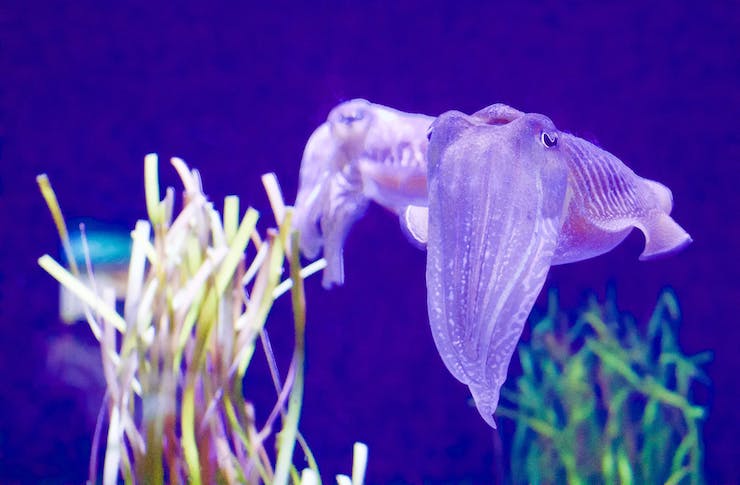
Scientists have often looked to nature to aid in technical engineering, and drone engineers are no exception to this. Many drone designs are based off creatures that fly naturally. There are drones that mimic the body type and motions of bats, birds, and bees. Using these creatures to inspire drone design has proven to create excellent unmanned flying machines. However, when looking to build a drone that can operate under water a flying creature is not the answer. Now a new group of scientists are looking to sea creatures to inspire the next wave of drones.
There are many types of underwater drones. Typically they navigate with propellers and fins. Scientists from China and Switzerland are embarking on new underwater drones that are inspired by the body shape and movements of squids and scallops. Rather than using rotors to create a force of motion these new drones will use a system of water propulsion.
Engineers and scientists from Beihang University in China are building what they call a squid-like aquatic-aerial vehicle. In 2013 a group of researchers from Hokkaido University in Japan finally found proof of rumored flying squids. These flying squid fly through four steps, launching, jetting, gliding and diving. While swimming near the surface the squids will draw in water. They will then push this water out of their bodies. The propulsion from the water being pushed out launches the squid out of the water like a jet. Next the squid spreads out it’s fins and tentacles to allow it glide through the air for about 3 seconds reaching a distance of close to 100ft. Lastly the squid will fold back it’s fins and tentacles to create an aerodynamic body shape to smoothly dive back into the water.
The team from Beihang University have created a drone that looks just like a flying squid, even down to the thin membranes that are found in between the squid’s tentacles. Their robotic squid is powered by compressed air that when a valve is opened will be pushed out, giving the drone lift out of the water. Then pneumatic actuators control the movement of the fins and tentacles to allow it to glide. While under water the squid drone can travel about 10 meters, but when jetting out of the water it can reach upwards of 20 meters. Right now they are working on a way to extend the drones distance and find a better way of giving the drone the propulsion it needs for multiple jumps.
Meanwhile a group of Swiss engineers from EPFL, one of the two Swiss Federal Institutes of Technology, is looking to design a drone based off of the principles of a scallop. Unlike many shelled sea creatures, like oysters, that use a foot to grip and drag itself along the ocean floor, scallops use a propulsion system to move. Scallops are bivalved creatures that live inside of a hinged shell. The part of the creature that is edible is actually the abductor muscle it uses to open and close it’s shell that is covered by a thin membrane to protect itself from debris. To move the scallop slowly opens it shell drawing in water through on of it’s two valves. Then it rapidly claps shut it’s shell that forces that water out through the other valve. This propels the scallop forward at a surprising speed. The scallop can change direction by pushing more or less water out through alternating valves.
The project is being headed by Jamie Paik through the EPFL’s Reconfigurable Robotics Laboratory. They see the RoboScallop as being a simple and robust means of creating a swarm of underwater drones. Because of it’s body design and how it rapidly opens and closes to create propulsion it is able to protect itself from elements that could interfere with movement through water. Paik’s team describes the RoboScallop as “a unique combination of robust to hazards or sustained use, safe in delicate environments, and simple by design”.
Though both projects are still in the research and design stage of development, they pose an interesting solution to creating underwater drones. Powering drones is often tricky as a drone’s battery life has to be relative to it’s size. By using a propulsion system a drone will need to utilize less battery power to move.
|